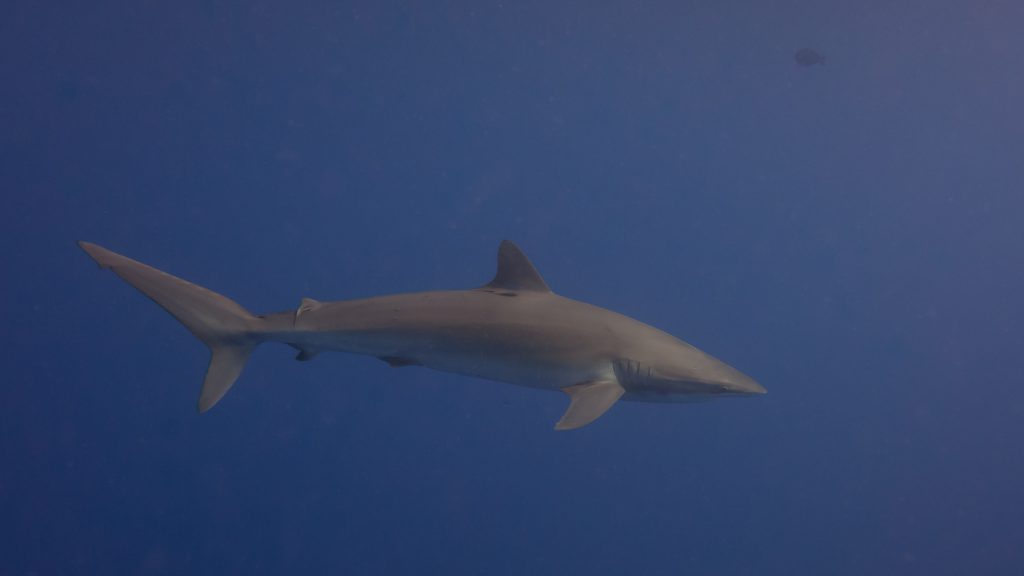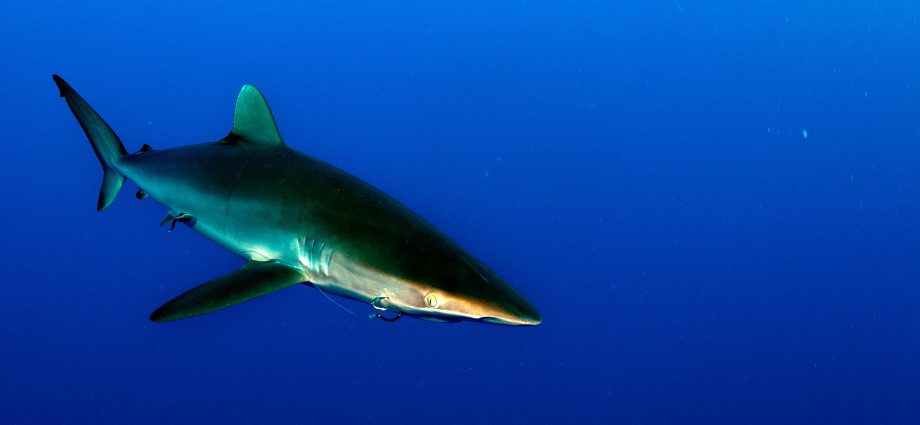The Silky Shark get its name for its smooth skin. It is one of the most common shark species of the open ocean, but due to overfishing its status is now vulnerable.
Latin name Carcharhinus falciformis
Maximum size in cm 330
Colour Deep, metallic bronze-gray above and white below.
Found where All leves in the open ocean, shallow inshore
Other names Blackspot Shark, Grey Whaler Shark, Olive Shark, Ridgeback Shark, Sickle Shark, Sickle-shaped Shark, Sickle Silk Shark, Net-eater Shark.
Status (IUCN) Vulnerable
Diet Bony fishes, squid
Open-mouthed slashing attacks
Highly mobile and migratory, this shark is most often found over the edge of the continental shelf down to 50 m (164 ft). It feeds mainly on bony fishes and squid, and has been known to drive them into compacted schools before launching open-mouthed, slashing attacks. Its sense of hearing is extremely acute, allowing it to localize the low-frequency noises generated by other feeding animals, and, by extension, sources of food.
Bycatch
The Silky Shark has a slender, streamlined body and typically grows to a length of 2.5 m (8 ft 2 in). Because of their abundance, they form a major component of commercial and artisanal shark fisheries in many countries. Silky sharks are valued for their fins, and to a lesser extent their meat, hide, liver oil, and jaws. In tuna fishery the Silky Shark is often bycatch. Tuna fishers are not too keen on the sharks for the damage they make on nets and catches. In the Pacific this species is sometimes known as the ‘net-eater shark’.
Although it has behaved aggressively towards divers, attacks are rare, as few humans enter its oceanic habitat. Suspected to be the cause of deaths with ship sinkings or plane crashes at sea.


